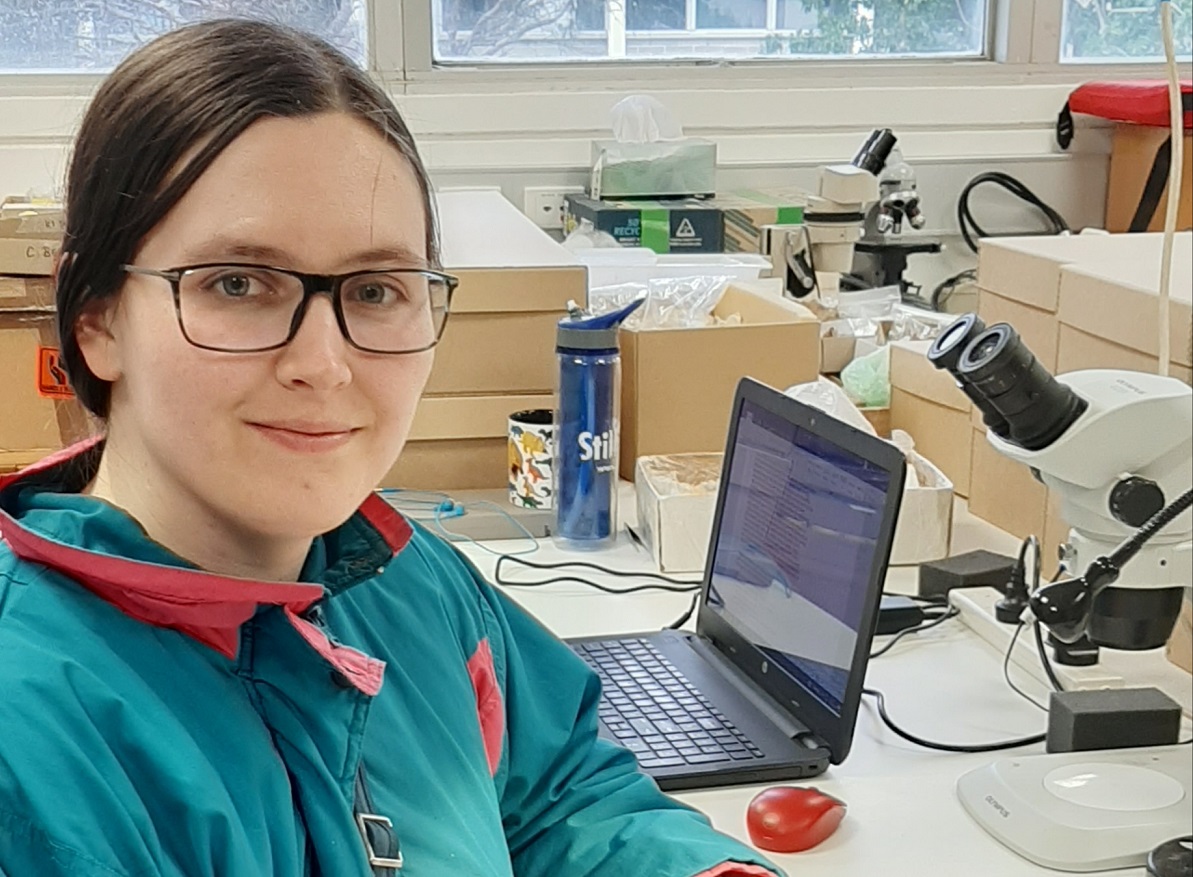
Her recent research identified fossils of the only known vulture species in Australia, which gained major media attention for Flinders palaeontologist Dr Ellen Mather. We spoke with her recently about the world’s ongoing fascination with fossils.
What is your role and what does your work focus on?
I’m an adjunct academic at Flinders University, working as part of the palaeontology team. I study fossil species of birds, especially birds of prey, and I have a particular focus on comparative morphology (studying physical differences and similarities between species) and systematics (studying relationships between species).
What journey brought you to this point in your career?
I first came to Flinders University in 2016 to do an Honours project that described 20 million year-old fossil rails (a kind of waterbird) from New Zealand. I then went on to start a PhD project in 2017, studying Australian fossil eagles and vultures ranging in age from 25 million to 50,000 years old. I completed my thesis and obtained my doctorate near the end of 2021, and I’ve been focused on getting the findings of my research published ever since.
Tell us about your research.
My research is focused on the evolutionary history and changes in diversity of accipitrid raptors (eagles, hawks and vultures) on our continent. Fossils of these birds tend to be quite rare, and less than a dozen Australian species are known across a time span of 25 million years. This presents quite a challenge in our understanding of how the modern assemblage of raptors came to be.
I spent about four years doing a PhD thesis that aimed to shed a little more light on these topics by looking at some un-described fossil material, and trying to figure out where they fit in the evolutionary tree of birds of prey. Since completing my thesis, more fossil material has been found and I’ve been revising some of my research to incorporate them before publication.
What is something you love most about your work?
It was always my dream to be a palaeontologist, ever since I was a kid. While there are many aspects to the role that the five-year-old me didn’t consider (like applying for grants, for instance), looking at a fossil and knowing that it was once a living, breathing animal that lived thousands or even millions of years ago still inspires the same awe as when I first started this research. I love trying to figure out how these animals might have looked and behaved, and I especially love bringing them back to the attention of the world, so these species can be both remembered and provide an inspiration for future studies.
What are you most proud of?
I’m really proud of what I’ve published on so far. My colleagues and I have described both Australia’s oldest known eagle, which lived 25 million years ago in the ancient forests of South Australia, and Australia’s first known vulture, which lived from 500,000 to 50,000 years ago and was widespread across the continent. It’s been incredible to see the interest these species have generated among both the scientific community and general public, and it’s been a privilege to have been able to work on them.
How do you like to relax or spend your spare time?
I enjoy reading fiction and I have a soft spot for fantasy, in particular. I also enjoy spending time with pets, family and friends.

